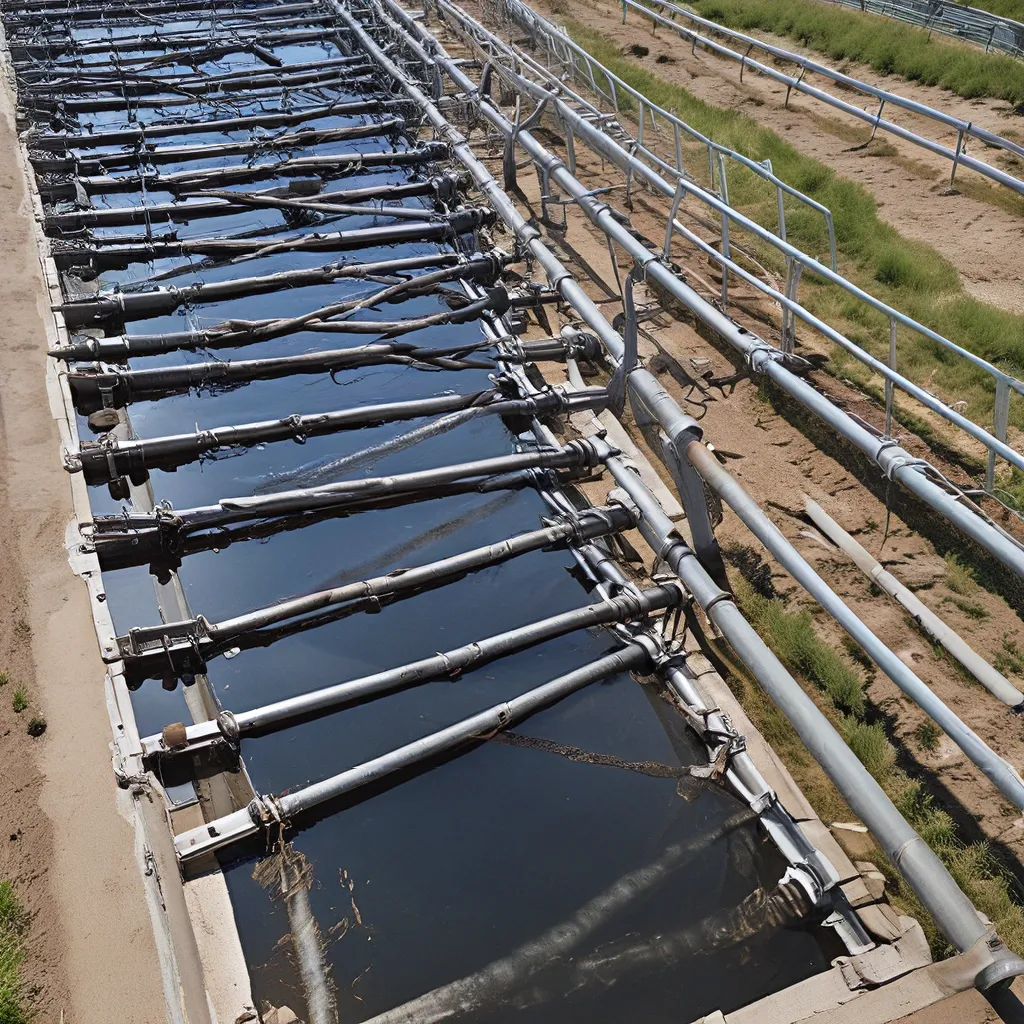
As someone who’s always been fascinated by the hidden complexities of our world, I’ve recently found myself captivated by the incredible world of wastewater treatment. It’s amazing to me how we can take the dirty, contaminated water that flows from our homes and businesses and transform it into something clean, safe, and even reusable. But what really has my attention these days are the emerging contaminants that are posing new challenges for the wastewater industry.
You see, it’s not just the obvious pollutants like oil, grease, and heavy metals that we have to worry about anymore. These days, we’re dealing with a whole host of micropollutants – tiny chemical compounds and pharmaceuticals that are finding their way into our water supply. Things like birth control pills, antidepressants, and even sunscreen ingredients are showing up in our wastewater, and that’s causing some serious headaches for the folks tasked with keeping our water clean.
But here’s the thing – the wastewater treatment industry is rising to the challenge. They’re not just sitting back and letting these emerging contaminants take over. In fact, they’re developing all kinds of innovative new strategies to remove these pesky micropollutants from the water. And let me tell you, some of this stuff is pretty darn fascinating.
Tackling Micropollutants with Advanced Oxidation
One of the most promising approaches I’ve been reading about is advanced oxidation processes, or AOPs for short. The idea here is to use powerful oxidizing agents like ozone or hydrogen peroxide to break down these complex organic compounds into simpler, less harmful substances.
Now, I know what you’re thinking – “Ozone and hydrogen peroxide? Isn’t that stuff dangerous?” Well, yes and no. In the right hands, these powerful oxidizers can be used very effectively to target and destroy micropollutants without causing any harm to the environment. In fact, some studies have shown that AOPs can remove up to 90% of certain pharmaceuticals and personal care products from wastewater.
And get this – researchers are even experimenting with combining AOPs with other treatment methods, like membrane filtration or adsorption onto activated carbon. By using these techniques in tandem, they’re able to tackle an even wider range of emerging contaminants. It’s like a one-two punch for micropollutants!
The Rise of Bioelectrochemical Systems
But AOPs aren’t the only trick up the wastewater industry’s sleeve. Another fascinating development that’s caught my eye is the rise of bioelectrochemical systems, or BES for short. These are essentially miniature power plants that use microorganisms to generate electricity while simultaneously breaking down organic pollutants.
The way it works is pretty cool. You’ve got these specialized bacteria that can transfer electrons to an electrode, generating a small electrical current. At the same time, they’re gobbling up all sorts of organic compounds – including many of those pesky micropollutants – as part of their metabolic processes. It’s like a built-in water treatment and power generation system, all in one neat little package.
And the best part? BES systems can be tailored to target specific types of contaminants, making them incredibly versatile. Some research has even shown that they can remove over 90% of certain pharmaceuticals and personal care products from wastewater. Talk about a win-win!
The Potential of Membrane Filtration
Of course, advanced oxidation and bioelectrochemical systems aren’t the only tools in the wastewater treatment arsenal. Another technology that’s been making waves is membrane filtration.
Now, I know what you’re thinking – “Membranes? Isn’t that just for desalination?” Well, yes and no. While membrane filtration has long been used to remove salts and other dissolved solids from water, it’s also proving to be incredibly effective at removing a wide range of micropollutants as well.
The way it works is pretty straightforward. These semi-permeable membranes act as physical barriers, allowing water to pass through while trapping all sorts of contaminants – everything from pharmaceuticals and pesticides to microplastics and heavy metals. And the best part? Membrane filtration can be used in conjunction with other treatment methods, like the AOPs and BES systems we discussed earlier, to create a truly comprehensive approach to micropollutant removal.
The EPA has even been funding research into the development of novel adsorbents and membrane materials to improve the effectiveness of these filtration systems. It’s all part of their ongoing effort to ensure that our water supplies remain clean, safe, and sustainable for generations to come.
The Future of Wastewater Treatment
As I’ve been diving deeper into this topic, one thing has become abundantly clear to me – the future of wastewater treatment is going to be all about innovation. These emerging contaminants may be a new challenge, but the industry is more than up to the task.
Whether it’s advanced oxidation, bioelectrochemical systems, membrane filtration, or some other cutting-edge technology, the folks working in wastewater treatment are constantly pushing the boundaries of what’s possible. And you know what? I can’t wait to see what they come up with next.
Because here’s the thing – the stakes are high. We’re not just talking about keeping our waterways clean and our communities healthy. We’re talking about the very future of our planet. As our population grows and our resources become more strained, the ability to effectively treat and reuse wastewater is going to be absolutely crucial.
And that’s why I’m so excited to see the wastewater treatment industry stepping up to the plate. They’re not just reacting to these emerging challenges – they’re getting out in front of them, developing cutting-edge solutions that will help ensure a sustainable water future for all of us.
So if you ask me, the future of wastewater treatment is bright. Sure, there are still plenty of hurdles to overcome, and the work is never done. But with brilliant minds and innovative technologies like these, I’m confident that we can tackle even the toughest micropollutant challenges and keep our water clean, safe, and abundant for generations to come.